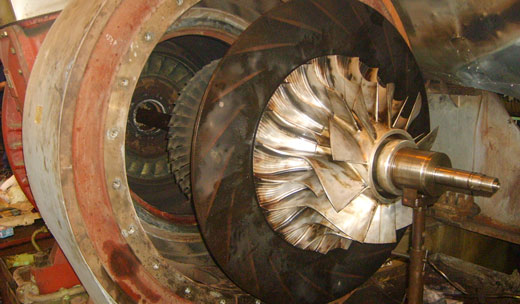
A ship is a huge amalgamation of various machines. These machines run on power and most of them are major consumer of powers. Power consumption by a ship while on sail and while moored are different and need to be analyzed separately. In this article we look at a process termed as cold ironing or alternative marine power that is used to supply power to a ship from the shore while it is moored.
Supply of Power to a Ship
Supply of power to a ship is a critical and a crucial issue. It acquires further importance in light of air pollution caused while the ship is moored. A ship while moored turns its engines off but this does not mean that it does not require power to run its various equipments like refrigeration, heating, lightning and emergency equipment. The ship meets its energy demands from the shore. This is known as cold ironing. Let us briefly understand the origin of the term.
Cold Ironing/ Alternative Marine Power
In the past, all ships used coal to fuel its engines and when a ship was moored, there was no need to keep the fire burning and feeding it with coal. The iron engines would cool down and would go cold and this was known as cold ironing.
In the modern world, cold ironing is a process that is used for supplying electricity from the shore to the ship in order to reduce the consumption of diesel and also control fuel emissions from the ship. While a ship is berthed, its auxiliary engines are kept functioning in order to provide lightning and other facilities like heating and air conditioning. To keep the engines functioning for these functions means a high consumption of diesel. It is not considered to be a cost effective option to keep the engines running even when the ship is moored. Cold ironing also helps to check wear and tear of machinery.
Functioning engines not only means consumption of fuel, it also means noise and air pollution. This noise and presence of pollutants is not only harmful for the crew members but also for the area around the port and the environment as a whole. Cold Ironing is a costly proposition and so is cleaning pollution from ships. Supplying electricity from the shore to a ship requires substantial investments at both ends that is the ship as well as the shore.
The U.S. Navy has been using the process since a long time and is considered standard at its ports. The Port of Los Angeles, Port of Long Beach, Port of Seattle in U.S., Lübeck Port and the ports of Kemi and Oulu in the Gulf of Bothnia, Zeebrügge and Gothenburg in Germany and the port of Antwerp in Belgium have a provision of cold ironing.
Cold ironing as a process is an alternative and a better method for providing electricity to the ship to carry out its daily and necessary functions. It allows shifting the function of generating power from the engine room to more environment friendly power plants.
Image Credits:
http://www.portoflosangeles.org/environment/alt_maritime_power.asp








